1950s Timeline – Transportation 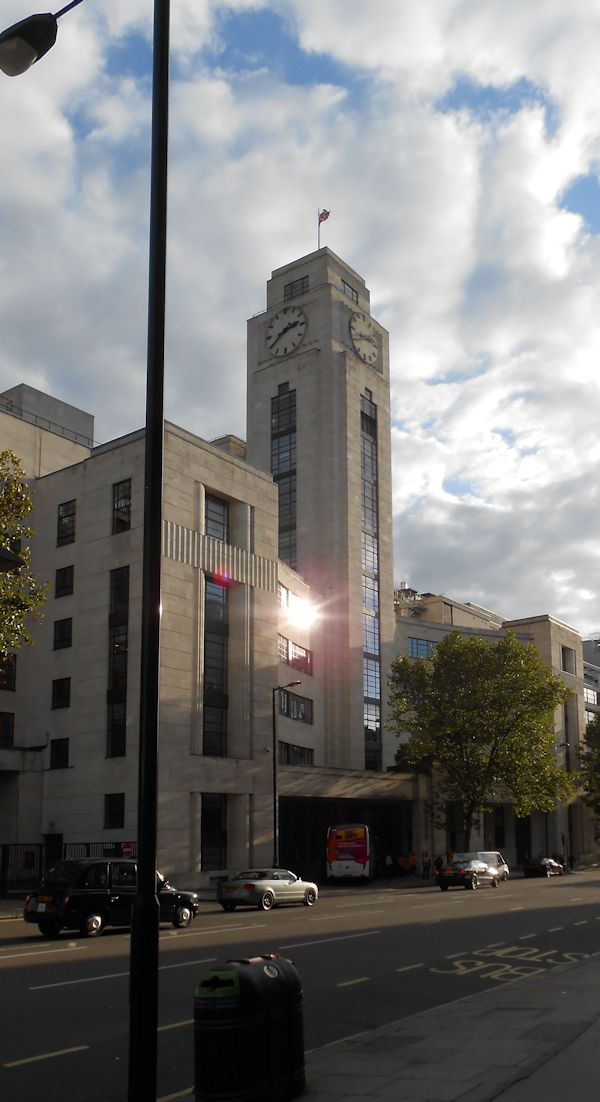
Victoria Air TerminalArt Modern structure designed by architect Albert Lakeman
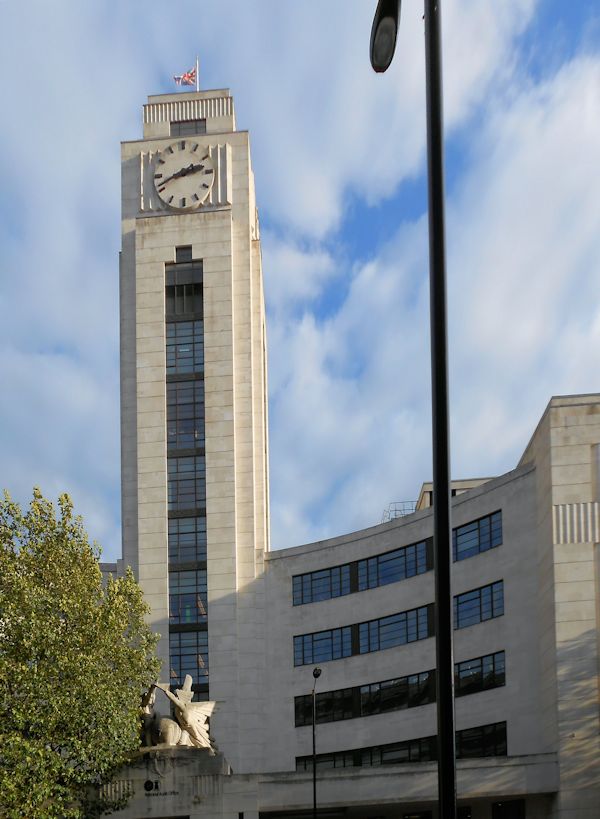
BOAC Air Terminal at Buckingham Palace Road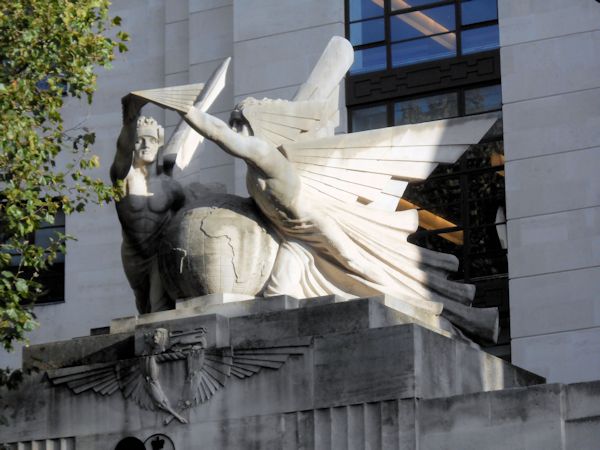
Speedbird symbol which is still used as a call sign by British Airways today
Looking back at the 1950s, some of the changes to London’s transportation, beginning with – the Flyers. During the 1950’s there were several air terminals strategically place around London – North, South and West but for some unknown reason nothing in the East.
The BOAC Air Terminal at Buckingham Palace Road, Victoria, is a rather striking Art Modern structure which was designed by architect Albert Lakeman, with construction starting in 1938 and completed by 1939. The building belonged to Imperial Airways and was originally known as the Empire Terminal. Imperial Airways originated the Speedbird symbol which is still used as a call sign by British Airways today. It is a little hard to understand how British Airways could so easily surrendered such a priceless architectural and corporate heritage—with its predecessor’s logo painstakingly wrought from the very stone above the entrance.
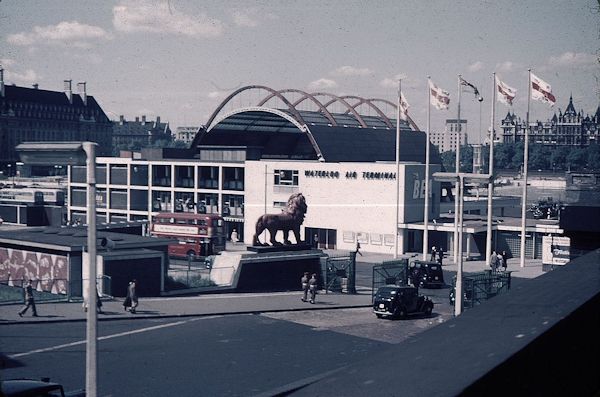
Waterloo Air Terminal One of the long forgotten terminals was the British Airways (BEA) Waterloo Air Terminal which was just across the road from the exit of Waterloo Station, on the site of the Shell Centre in York Road. The Waterloo Air Terminal replaced BEA’s Kensington Air Terminal which operated from Stafford Court, 108, High Street, Kensington, closing down on the 19 May 1953. The Coade stone Lion seen in our old picture once stood at the exit gates of Waterloo Station, before it was finally removed and re-erected on its present day site on the Southbank end of Westminster Bridge.
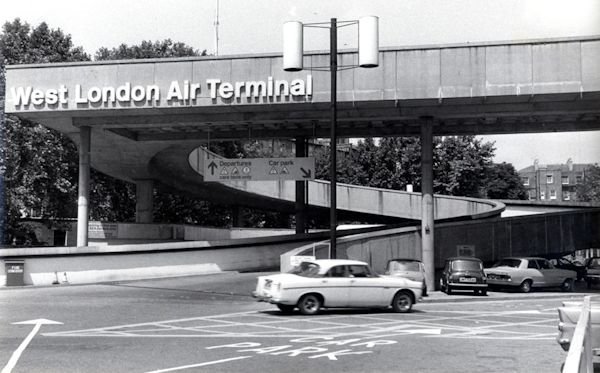
Present day Sainsbury’s - once the West London Air Terminal
The West London Air Terminal which was on Cromwell Road, was first opened in 1957 and stood where Sainsbury’s stands today, with the car park and service road surrounding the supermarket remaining almost unchanged.
Clarksons Coaches had the North London Air Terminal at 202-204 Finchley Road, during the 1960’s which was used for coach transport to Luton Airport, the main airport served by Court Line, which was Clarksons main air transport supplier. The building almost opposite Finchley Road & Frognal Station is still there but now occupied by Allied Irish Bank with apartments above.
In its early years what is now London Heathrow Airport was the Great West Aerodrome, sometimes known as Heathrow Aerodrome. During 1953, Queen Elizabeth II ceremonially laid the first slab of a new runway at Heathrow. During December that year there were celebrations at the airport as passenger traffic reached 1 million for the first time, with a total of 62,000 flights completed over the year. Two years later in 1955 the Queen was back again at the flyers to open the first permanent passenger terminal, the Europa Building, later to become known as Terminal 2.
Thing that have come and gone over time

Popular in the 1950s the Bedford van The Bedford CA van (1952-1969) produced by Vauhall Motors of Luton. With its front sliding doors, which made it very popular for newspaper delivery vans, because it was quicker delivering to newspaper street vendors for young lads jumping in and out of whilst dropping off the latest editions as the vans wheels were still moving. In the fifties there were plenty of local evening papers to read in London, with the News, Star and Standard, now only the Standard remains and they even have to give that away for free! The Evening News during these times had a van which was built on the FX4 taxi chassis, which indecently was also fitted with sliding doors.
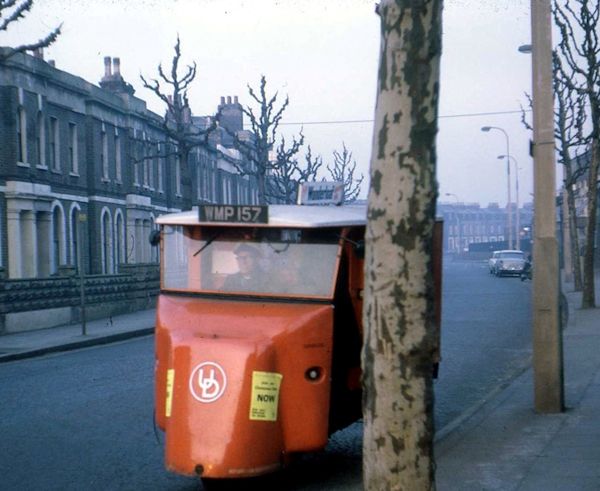
Battery powered milk-floats and returnable glass bottles - very green by today's standards
The milkman doing his round back in the 50’s drove at that time their modern day battery powered milk-floats which were replacing the horse drawn carts, as the milkmen rattle their way to almost every door-step down every street in London, delivering the daily pinta. The pioneers of these milk-floats were the company Wales and Edwards, which entered the battery electric vehicle market in 1951 with a chain-driven 3-wheeler, designed and built at the request of United Dairies (UD). Such was its success that the dairy placed an order for 1,500 of them, and more than twice that number would eventually follow. The “float” was soon offered to all the other milk companies such as Express Dairies, London Co-op and the smaller privately owned dairies in 1953, the chassis was, hugely popular, soon joined by larger, more powerful W&E models. This is one of those sad reminders of how such a thriving industry employing many thousands of workers has dwindled almost to the point of extinction!
London Time
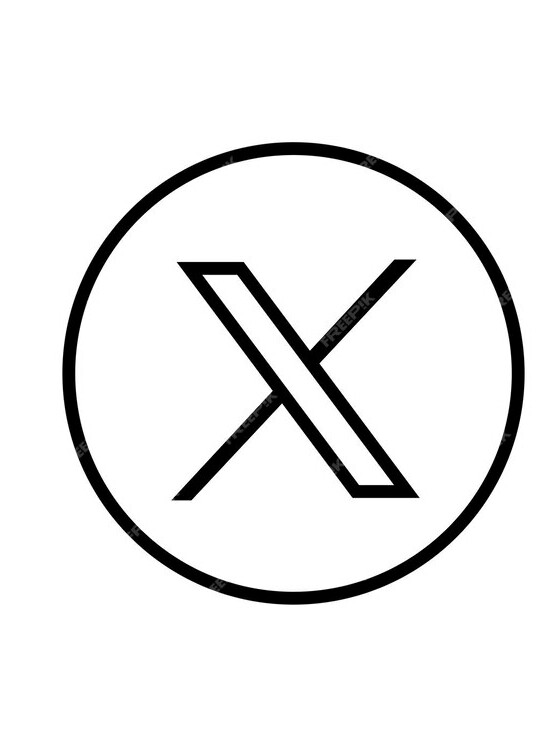
Follow Us
The contents of this website are the property of knowledgeoflondon.com and therefore must not be reproduced without permission. Every effort is made to ensure the details contained on this website are correct, however, we cannot accept responsibility for errors and omissions.
© Copyright 2004 -
Contact Us | Advertise